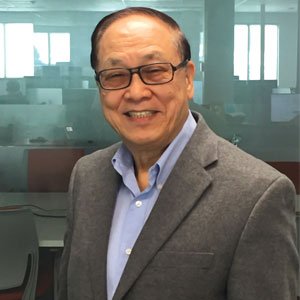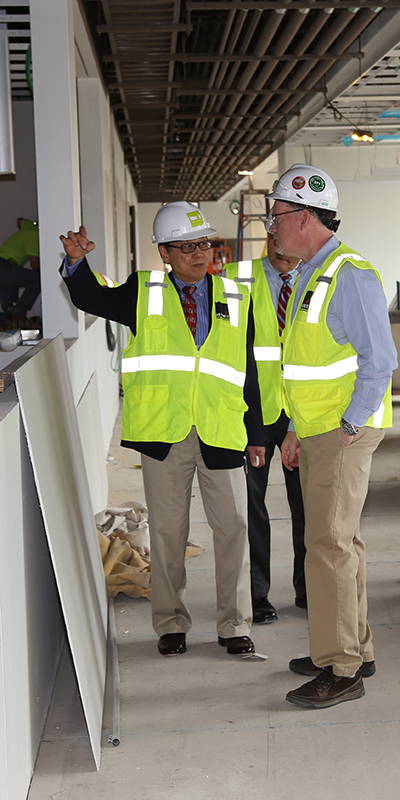 When Ching-i Hsu came to Brown from Taiwan in the late 60s in search of an advanced engineering education, his graduate advisor was Professor Gerald (Jerry) Heller, a “rainmaker” and director of the Materials Research Laboratory, which received considerable government funds.
When Ching-i Hsu came to Brown from Taiwan in the late 60s in search of an advanced engineering education, his graduate advisor was Professor Gerald (Jerry) Heller, a “rainmaker” and director of the Materials Research Laboratory, which received considerable government funds.
“Heller told me, ‘Just keep doing whatever you think is right.’ That might not have worked for some people. But I found it to be great; it gave me the freedom to try a variety of things.”
Balancing out the supportive but “hands-free” approach by Heller was the mentorship of Brown engineering’s iconic Professor (now emeritus) Barrett Hazeltine. “He was so generous with his time,” remembered Dr. Hsu. “A great teacher, he shared his wisdom, knowledge, and guidance. He’s a very admirable person.”
That freedom—including the freedom to make mistakes and learn from them— combined with the knowledge gained from supportive mentorship became two keys to his future success. In 1985 Dr. Hsu, along with his wife, Esther, founded Raritan Computer in their home. He later developed one of the world's first electronic switches to control multiple PCs and servers, using only one monitor and keyboard (prior to the popularity of the mouse). From this single invention, he helped create a new industry.
Today KVM (keyboard, video, mouse) switches can be found in any data center in the world and Dr. Hsu is recognized by many as one of the fathers of this technology. He remained Raritan’s CEO until 2015, when it was sold to the French industrial group Legrand. Raritan’s Data Center Infrastructure Management software business then spun off into Sunbird Software, with Dr. Hsu as its Chairman.
At about the same time, he reconnected with Brown. “I had been thinking about it for many years,” he said. “A graduate research assistantship supported my time on campus. And the work I did through Brown engineering provided a great background, great training for thinking and problem solving. I had always hoped that one day I would be in a position to offer similar help to others.”

Not surprisingly, Dr. Hsu’s philanthropy included the establishment of an endowed fellowship. And in gratitude for funds given to the now nearly completed School of Engineering’s new research building, two graduate collaborative spaces—totaling 4,000 square feet—on the third floor will bear his name. The strategically placed, light-filled rooms will accommodate postdoctoral and graduate students who will be writing up the results of research conducted in adjacent labs.
In addition, the spaces “hold the promise of cutting-edge research and innovations, which will shape a next generation of engineers and will drive technologies that make the world a better place for everyone,” said Larry Larson, Sorensen Family Dean of Engineering. Thanks to the conjunction of his gifts, reflected Dr. Hsu, he will be supporting a student who will walk those same floors someday.
“It’s exciting to see it all coming together,” said Dr. Hsu after a safety-goggles-and-hard-hat tour of the building in April. “The back walls of the graduate spaces are there and the supporting structure is being built out. You can visualize it. To see it in person was very fulfilling.
“I am not the sort of person who seeks publicity. But I am hoping that my engagement with Brown—and in particular with Brown engineering—may prove to be an inspiration to others. Something good is going to be done there.”
Ching-i Hsu earned a master of science in 1970 and a Ph.D. in 1974, both in engineering. He is the father of a Brown graduate.